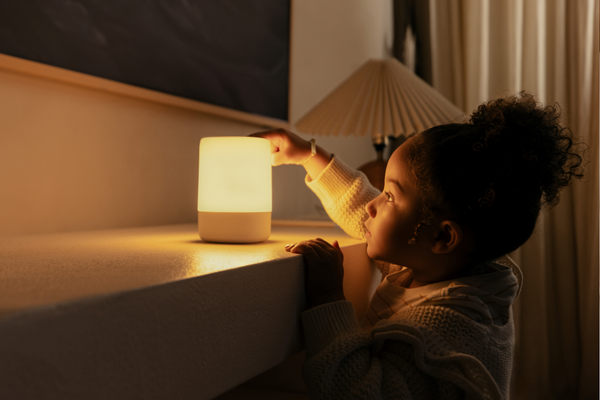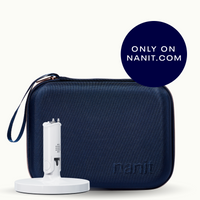Every stage of growth in your child’s life is a cause for celebration, but there are few as monumental as their first tooth. It’s a huge milestone in a baby’s early life.
Some of the most common symptoms associated with teething, such as fussiness and difficulty settling overlap with common conditions in babies. So, how do you know if your baby is teething, or if something else might be to blame?
Here are the most common teething signs.
- Drooling more than usual. When a child is teething, the body naturally increases its production of saliva to soothe inflamed gums as teeth push through them. So you may see more than average drooling before or during the teething stage.
- Rashes. A rash localized on a baby’s mouth, chin, neck, and cheeks is another sign of teething. This is caused by excessive drooling, which can irritate the skin.
- Gnawing. Babies are organically inclined to chew and bite on things, be it one of their fingers or their whole hand. (Experts suggest it’s one of the ways babies learn to self-soothe.) They may do more of this when they’re teething, as the massaging of their gums can ease the soreness.
- Irritability. It’s only natural that your baby may become cranky as their teeth begin erupting through the gum line. What “irritability” looks like may vary from child to child, but it typically involves agitation, fretfulness, and fussiness.
- Watching your child endure the unpleasantness of teething can be heart-wrenching at times; luckily, there are simple ways you can help curb their confusion and discomfort. Be on the lookout for these symptoms that often come along with teething.
Common teething symptoms
If you suspect your baby is teething, they may also experience one or more of these symptoms:
- Ear pulling and cheek rubbing. These are triggered by gum and jaw pain, which may radiate to the ears and cheeks, especially when your baby’s biggest teeth—their molars—begin to emerge.
- Gagging and coughing. The increase in saliva your child experiences during teething can also cause them to occasionally cough.
- Low-grade fever. A fever is considered to be “low-grade” when it hovers between 98 and 100 degrees Fahrenheit. The low grade fever may also be caused by gum inflammation, a natural body reaction as teeth erupt.
- Swollen gums. If your child's gums appear red and swollen, it may be a sign of teething.
- Refusing food. Yes, your child may be putting whatever they can into their mouths to alleviate the achiness of teething. But the suction created by breastfeeding and bottle-feeding may intensify their gum discomfort so they may eat less than usual.
How to soothe your teething baby
Once you know that your baby is getting a new tooth, here are some tips on how you can help a teething baby be more comfortable:
- Allow your little one to gnaw on a cold, wet washcloth (especially before bedtime) to help numb their gums.
- Have your child wear a soft and absorbent bib that you can use to gently swipe away excess drool.
- Skip detergents, soaps, and lotions that contain harsh chemicals, which may only aggravate your child’s “teething rash.”
- Provide your baby with distractions when their pain seems particularly acute, such as gently rocking them, playing quiet, relaxing music, humming softly, cuddling, or using a Sound + Light Machine at night to help them wind down.
- Give your infant an appropriate dose of pain reliever ( infant acetaminophen or infant ibuprofen (beginning at 6 months) after checking with your pediatrician.
- Offer your baby cool food like yogurt or puréed fruits or vegetables if they’ve started complementary foods.
- Supply your baby with a safe teething toy made of solid rubber.
- Rub a dry toothbrush against their gums. It’s widely thought of as one of the most effective ways to curtail the pain of teething.
Teething remedies to avoid
Your parents and grandparents may have rubbed whiskey on a teething baby’s gums. We no longer recommend that.
Parents should also steer clear of:
- Homeopathic teething tablets and gels, whose safety and efficacy have yet to be proven.
- Teething anklets, bracelets, and necklaces, which may pose dangers of choking or strangulation
- Certain pain relievers, such as those containing lidocaine and benzocaine, may be extremely hazardous (or even lethal) for infants.
When to consult a healthcare professional
Children may experience an uptick in colds and infections around 6 months of age, when their immune systems start to develop. This is also around the same time they often start teething. So, symptoms that seem to arrive with teething could mask the sign of an infection or illness.
Reach out to your pediatrician if you spot the following in your child, which may be a sign that something more than teething is going on:
- Diarrhea
- A fever higher than 100.4 degrees
- A low-grade fever that persists for more than three days
- Refusing to eat for more than a few days
- Any drainage from their ears
- Vomiting
You might also want to contact your pediatrician if your baby’s symptoms of teething persist or get more severe. Above all? You know your little one best—so trust your instincts as to when it’s time to seek out a professional’s guidance on how to help your baby.
Nanit supports your parenting journey
Nanit is here to help ensure your baby’s rest and wellness. Our top-rated baby monitor and app allows you to keep an eye on your child, whether they’re down for a nap or for the night. In turn, you may find the peace of mind you need for a rejuvenating night’s sleep.
Key takeaways
- Know the common signs of teething babies. Increased drooling, a rash around the mouth, rubbing at gums, and increased fussiness are all possible signs of a teething baby.
- Give your infant ways to minimize teething discomfort. Safe items to offer for teething relief include a cold washcloth for your baby to chomp on, a rubber teething toy, an age- and weight-appropriate pain reliever, or a dry toothbrush massage on their gums. It’s always recommended to run ideas by your pediatrician first
- Look out for other causes for these symptoms. If your baby’s irritability is accompanied with diarrhea and or vomiting, a fever above 100.3, refusal to eat, decreased urine output, or other concerns, consult your pediatrician immediately.








































